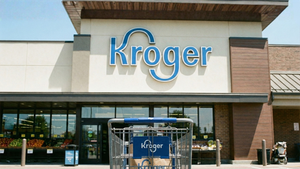
The United States housing market, long plagued by an acute supply deficit, is showing complex signals as new construction efforts intensify to meet burgeoning demand. While recent data reveals a notable surge in housing unit completions, offering a potential reprieve for frustrated homebuyers, underlying trends in housing starts and permits suggest a cautious outlook for sustained inventory growth in the immediate future. This mixed bag of developments highlights the ongoing struggle to rebalance a market characterized by high prices, elevated mortgage rates, and a historic shortage of available homes.
This new wave of completed homes, particularly multi-family units, is poised to inject much-needed inventory into a market that has seen affordability plummet to historic lows. The immediate implication is a potential easing of competitive pressures in some segments, though the long-term impact on overall home prices and buyer accessibility remains contingent on sustained construction efforts and the evolution of economic factors like interest rates and material costs.
A Crucial Influx: Housing Completions Rise Amidst Shifting Market Dynamics
August 2025 saw a significant uptick in privately-owned housing completions, reaching a seasonally adjusted annual rate of 1,608,000 units. This represented an encouraging 8.4% increase from July 2025, signaling that many previously initiated projects are finally coming online. Single-family housing completions rose by 6.7% to a rate of 1,090,000 units, while multi-family completions, for buildings with five units or more, surged by 10.8% to 503,000 units. This burst of activity is critical in a market that, as of July 2025, faced an estimated housing deficit of 4.7 million units, according to Zillow research.
However, a closer look at the data reveals a more nuanced picture. Despite the monthly increase, overall completions in August 2025 remained 8.4% below the rate observed in August 2024. More importantly, forward-looking indicators like housing starts and building permits declined both month-over-month and year-over-year. Single-family starts decreased by 7% from July, and multi-family starts also saw a drop, with building permits falling to their lowest level since May 2020. This suggests that while current completions are high, the pipeline for future construction may be thinning, potentially leading to weaker completion numbers towards the end of 2025 and into 2026. The number of homes currently under construction is also trending downwards, with multi-family units in progress decreasing over 20% from last year and single-family homes down nearly 5%.
Key players in this unfolding scenario include major homebuilders such as D.R. Horton (NYSE: DHI) and Lennar (NYSE: LEN), who are navigating fluctuating material costs, labor shortages, and high borrowing costs. Government initiatives, though varied, aim to streamline permitting processes and incentivize affordable housing development. Initial market reactions have been cautious; while inventory has risen for 20 consecutive months year-over-year by June 2025 (up 28.9%), it still falls significantly short of pre-COVID levels. Builders, as reflected in the NAHB/Wells Fargo Housing Market Index (HMI) which held at 32 in September 2025 (indicating pessimism), are resorting to price cuts (39% of builders) and sales incentives (65% of builders) to attract buyers amidst weak demand and high mortgage rates.
Homebuilders Face a Delicate Balancing Act While Buyers Eye Opportunities
The current environment presents a complex landscape for various stakeholders in the housing market, creating both potential winners and losers. Homebuilders, such as D.R. Horton (NYSE: DHI), Lennar (NYSE: LEN), and PulteGroup (NYSE: PHM), are in a precarious position. While the recent surge in completions allows them to monetize their investments and address the supply crunch, the concurrent decline in starts and permits, coupled with negative builder sentiment (NAHB HMI at 32), indicates ongoing challenges. They are currently "winning" by bringing much-needed inventory to market, but "losing" on profitability margins due to price cuts and incentives to move units. Their future success heavily depends on a moderation of interest rates to stimulate buyer demand, as evidenced by their optimism for the final quarter of 2025.
Prospective homebuyers stand to be significant winners, particularly if the increase in inventory translates into more choices and, eventually, a moderation of price growth. With inventory steadily increasing—up 28.9% year-over-year by June 2025—buyers are gaining more leverage, especially in regions with a higher concentration of new builds. The expectation of gradually declining mortgage rates in late 2025 and into 2026 further enhances their position, offering improved affordability and access to capital. This shift could finally provide relief for those who have been priced out or outbid in recent years.
Conversely, existing homeowners who are "locked in" by historically low mortgage rates (over 80% hold rates significantly below current market levels) might experience a nuanced "loss." While their home values are generally projected to continue moderate growth, the increasing supply could temper aggressive appreciation, potentially making it less appealing to sell and trade up or down if it means taking on a higher interest rate mortgage. Building material suppliers could also face fluctuating demand. While high completion rates initially boost sales, the slowdown in new starts and permits suggests potential softening in future orders, requiring them to adapt to an inconsistent pipeline.
Broader Implications: Reshaping Affordability and Market Dynamics
The current trajectory of new construction and housing inventory carries profound implications for the broader industry and economy. One of the most significant impacts is on housing affordability. While the increase in completions is a step towards alleviating the severe housing deficit, experts do not foresee a "full affordability unlock" in the immediate future. Home prices are projected to experience moderate growth, decelerating to around 3.8% in 2025 and 3.6% in 2026, primarily due to persistent demand and the slow pace of supply catching up. However, the anticipated decline in mortgage rates—with some models projecting 15-year fixed rates dipping to around 5.5% and 30-year rates easing to 6.7% by year-end 2025—is expected to offer modest improvements in affordability, particularly in softer housing markets.
This influx of new homes also plays a crucial role in rebalancing market dynamics. The "lock-in effect," where existing homeowners are reluctant to sell due to low mortgage rates, has severely constrained the resale market. New construction, therefore, becomes the primary engine for increasing overall housing stock. This shift can temper the bidding wars seen in recent years, leading to a more normalized purchasing environment. The rising inventory, even if still below pre-pandemic levels, provides buyers with more options, potentially influencing migration patterns as people seek out more affordable regions or newly developed communities. The ripple effects extend to the rental market, where increased multi-family completions could help stabilize or even reduce rental costs, indirectly easing pressure on household budgets.
From a regulatory and policy standpoint, the ongoing housing challenges underscore the need for continued government engagement. Initiatives that streamline permitting processes, offer incentives for affordable housing development, and address infrastructure needs will be critical. Historically, periods of significant housing undersupply have often been followed by increased construction, eventually leading to market stabilization. However, the current cycle is unique due to the combination of high interest rates, significant demographic shifts, and the lasting impact of the pandemic on labor and supply chains. Comparisons to previous housing booms, such as the mid-2000s, are often made, but the fundamental difference lies in the underlying demand, which remains robust despite economic headwinds, driven by household formation rather than speculative excess.
What Comes Next: A Gradual Path Towards Market Equilibrium
Looking ahead, the housing market is poised for a period of gradual rebalancing, heavily influenced by the interplay of new supply and evolving interest rate environments. In the short term, the high rate of housing unit completions observed in August 2025 is expected to continue supporting modest inventory growth through the remainder of the year and into early 2026. Experts predict approximately 17% more homes on the market by year-end 2025 across both single-family and multi-family segments. This increased selection, coupled with the projected easing of mortgage rates, is likely to stimulate existing home sales, with forecasts anticipating a 7.5%-9% rise, and new home sales, projected to increase by 11%.
However, the longer-term outlook is tempered by the recent slowdown in housing starts and building permits. This suggests that the current surge in completions might not be sustainable without a renewed impetus for new project initiation. Strategic pivots will be essential for homebuilders, who may need to adapt to changing buyer preferences, potentially focusing on more compact, efficient designs or expanding into areas with lower land and labor costs. They will also need to continue utilizing sales incentives and potentially explore new financing models to attract hesitant buyers. The market opportunities may emerge in specific regional markets experiencing strong job growth or those with favorable regulatory environments for construction. Conversely, challenges could arise from potential oversupply in particular multi-family segments if demand does not keep pace, or if construction costs remain stubbornly high.
The most critical factor influencing future market dynamics will be the Federal Reserve's monetary policy and its impact on mortgage rates. A sustained period of declining rates, even if gradual, is considered the primary catalyst for truly unlocking more supply (by enabling existing homeowners to move) and improving affordability. Potential scenarios include a "soft landing" where rates slowly decrease, allowing inventory to build and prices to stabilize, or a more prolonged period of elevated rates that could stifle construction and maintain affordability challenges. Investors should closely monitor macroeconomic indicators, particularly inflation data and subsequent central bank decisions, as these will dictate the trajectory of mortgage rates and, consequently, the health of the housing market.
Conclusion: Navigating a Complex and Evolving Housing Landscape
The journey to ease the housing supply crunch is proving to be a complex and multifaceted endeavor. While the recent surge in new housing unit completions provides a much-needed breath of fresh air for a constrained market, it represents just one piece of a larger, intricate puzzle. The immediate takeaway is a cautious optimism: more homes are indeed coming online, offering prospective buyers a wider array of choices and the potential for a less frantic purchasing experience than in recent years. However, this positive trend is juxtaposed against a backdrop of declining new project initiations, persistent affordability challenges, and a wary homebuilder sentiment, all significantly influenced by the prevailing interest rate environment.
Moving forward, the housing market is entering a phase of gradual rebalancing rather than a dramatic correction. The "lock-in effect" on existing homeowners and robust underlying demand ensure that a widespread market crash is unlikely. Instead, investors and homebuyers should anticipate moderate home price appreciation, with some regional variations, and a slow, steady increase in overall inventory. The trajectory of mortgage rates will be the paramount determinant of market momentum; any significant and sustained reduction will undoubtedly catalyze both demand and, eventually, new supply.
In the coming months, investors should closely watch key indicators such as monthly housing starts and permits for signs of renewed builder confidence, the National Association of Home Builders/Wells Fargo Housing Market Index for sentiment, and, crucially, inflation data and central bank announcements for clues on future interest rate movements. The housing market is undergoing a significant transformation, and while the path to equilibrium is not without its hurdles, the increased focus on new construction offers a viable, albeit gradual, route to a more stable and accessible housing future for many Americans.






